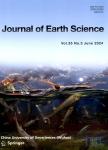A Study of the Method for the Recognition of Anomalies in Geochemical Hydrocarbon Exploration
A Study of the Method for the Recognition of Anomalies in Geochemical Hydrocarbon Exploration *出 版 物:《Journal of Earth Science》 (地球科学学刊(英文版))
年 卷 期:1998年第17卷第1期
页 面:74-82页
核心收录:
学科分类:081801[工学-矿产普查与勘探] 081802[工学-地球探测与信息技术] 08[工学] 0818[工学-地质资源与地质工程]
主 题:geochemical exploration petroleum exploration anomaly recognition data processing method research.
摘 要:The greatest difficulties in recognizing geochemical hydrocarbon anomalies are: (1) how to objectively and accurately separate anomalies from background; (2) how to distinguish hydrocarbon pool related apical anomalies from lateral anomalies controlled by faults; and (3) how to eliminate interferences. These uncertainties are serious obstacles for the wide acceptance and use of geochemical techniques in hydrocarbon exploration. In this paper, the features of hydrocarbon anomalies were analyzed based on the micro migration mechanisms. In most cases, there are two anomalous populations or point groups, which are produced by two distinct mechanisms: (1) a population that directly reflects oil and gas fields, and (2) one that is related to structures such as faults. Statistical studies show that background anomalous populations and the boundaries between them can be described by the population means, prior probabilities, which are the proportions of population sizes, and covariance matrices, when background and anomalous populations have normal distributions. When this normality condition is met, a series of formulas can be derived. The method is designed on the basis of these allows: (1) univariate anomaly recognition, (2) elimination of interferences, (3) multivariate anomaly recognition, and (4) multivariate anomaly combination which depicts a more representative picture of morphology of the anomalous target than individual anomalies. The univariate and multivariate anomaly recognition can not only separate anomalies from background objectively, but also simultaneously distinguish the two types of anomalies objectively. This method was applied to the hydrocarbon data in Yangshuiwu region, Hebei Province. The interferences from regional variation of background were eliminated, and the interpretation uncertainty was reduced greatly as the anomalous populations were separated. The method was also used in Daxing region within the confines of Beijing City, and Aers



